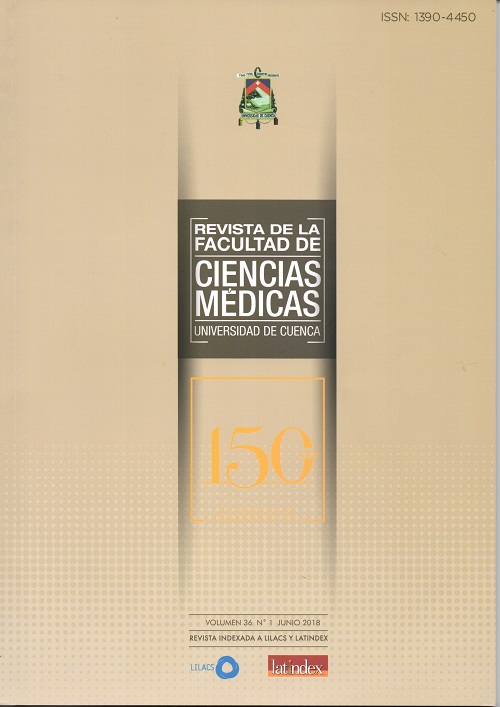Instability of microsatellites in colo-rectal cancer and its distribution according to prognostic factors in SOLCA Cuenca 2004-2014.
Abstract
Abstract
Worldwide, colorectal cancer is the third most common neoplasm in men and the second in women. Tumorigenesis pathways allow us to sub-classify patients and protocolize treatments. The microsatellite instability constitutes one of these pathways; it is present in a 15% to 20% in colorectal carcinoma; its presence is associated with a better prognosis.
Objective:
To determine the frequency of microsatellite instability and its distribution according to prognostic factors in biopsies of patients with colorectal cancer in the Solca-Cuenca Cancer Institute during the period 2004-2014.
Method:
It is an observational, analytical study. About 240 patients with colorectal cancer were studied, they were diagnosed in the Pathology Department of the Cuenca Cancer Institute and who had their biopsy material where the immunohistochemical techniques were performed with 4 markers MLH1, MSH2, MSH6, and PMS2.
Results:
The 37.9% corresponded to men and 62.1% to women. The average age was 66.2 years. The 58.75% (n = 141) had localization in the colon. A lack of protein expression was observed in 24.2% (58 patients). Regarding to proteins, 68.96% (40 cases) were MLH1 / PMS2; 1.72% (1 case) MSH2 / MSH6. About the cases that did not express the proteins, 87.93% were located in the colon; 79.3% were adenocarcinoma; 58.6% were moderate grade and 37.9% were stage II. In the bivariate analysis, a statistically significant association was established between microsatellite instability with tumor location (OR 7.4, CI 3.2-17) and degree of differentiation (OR 2.8, CI 1.5-5.4).
Conclusions:
The protocolized use is recommended within the treatment of colorectal cancer.
Key words: colonic neoplasms, Microsatellite Instability, Prognosis.
Downloads
Published
Issue
Section
License
Copyright © Autors.

You are free to:
 |
Share — copy and redistribute the material in any medium or format |
 |
Adapt — remix, transform, and build upon the material for any purpose, even commercially. |
Under the following conditions:
 |
Attribution — You must give appropriate credit, provide a link to the licence, and indicate if changes were made. You may do so in any reasonable manner, but not in any way that suggests the licenser endorses you or your use. |
| NonCommercial — You may not use the material for commercial purposes. | |
| ShareAlike — If you remix, transform, or build upon the material, you must distribute your contributions under the same license as the original. |
| No additional restrictions — You may not apply legal terms or technological measures that legally restrict others from doing anything the licence permits. |






